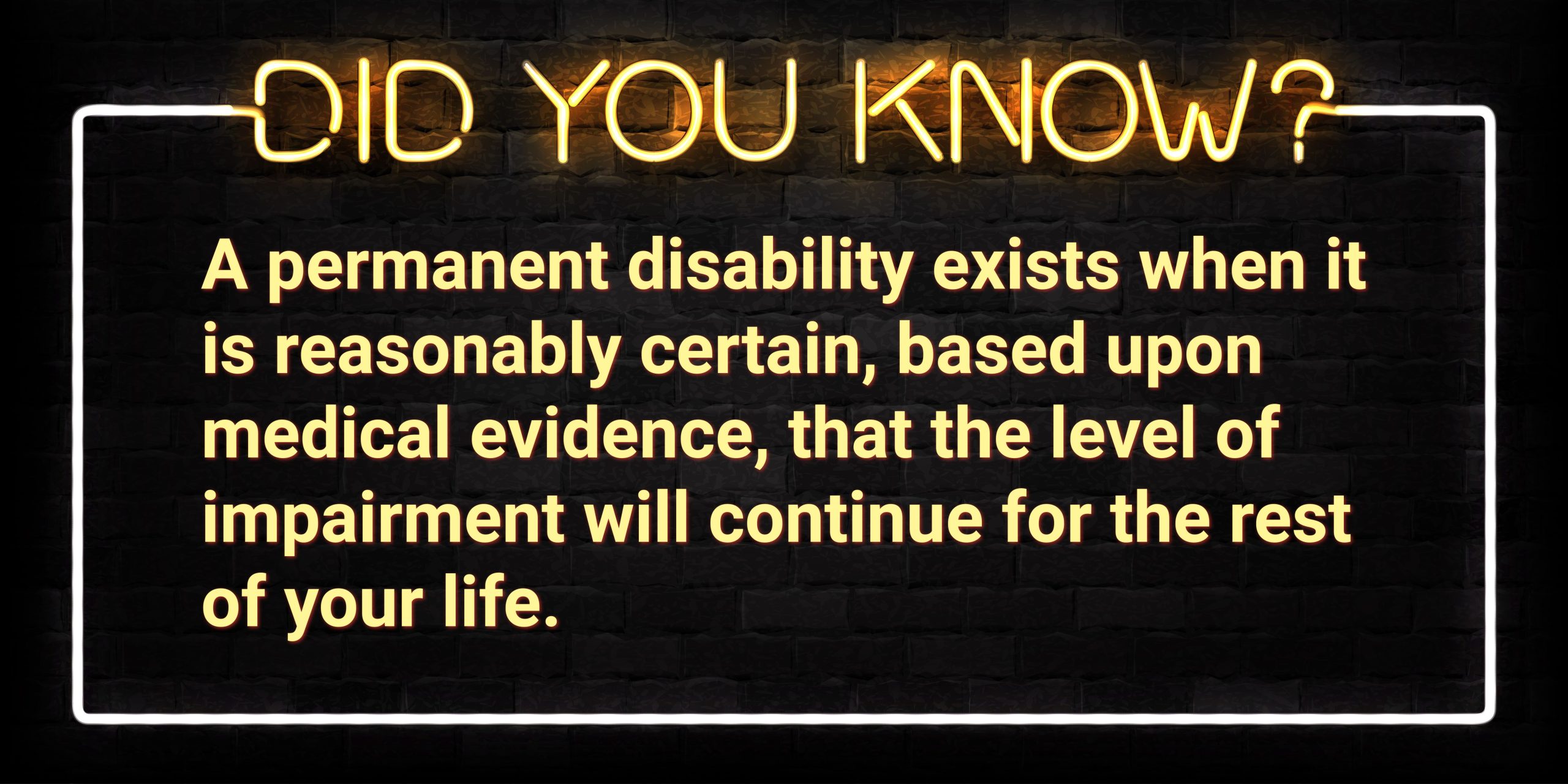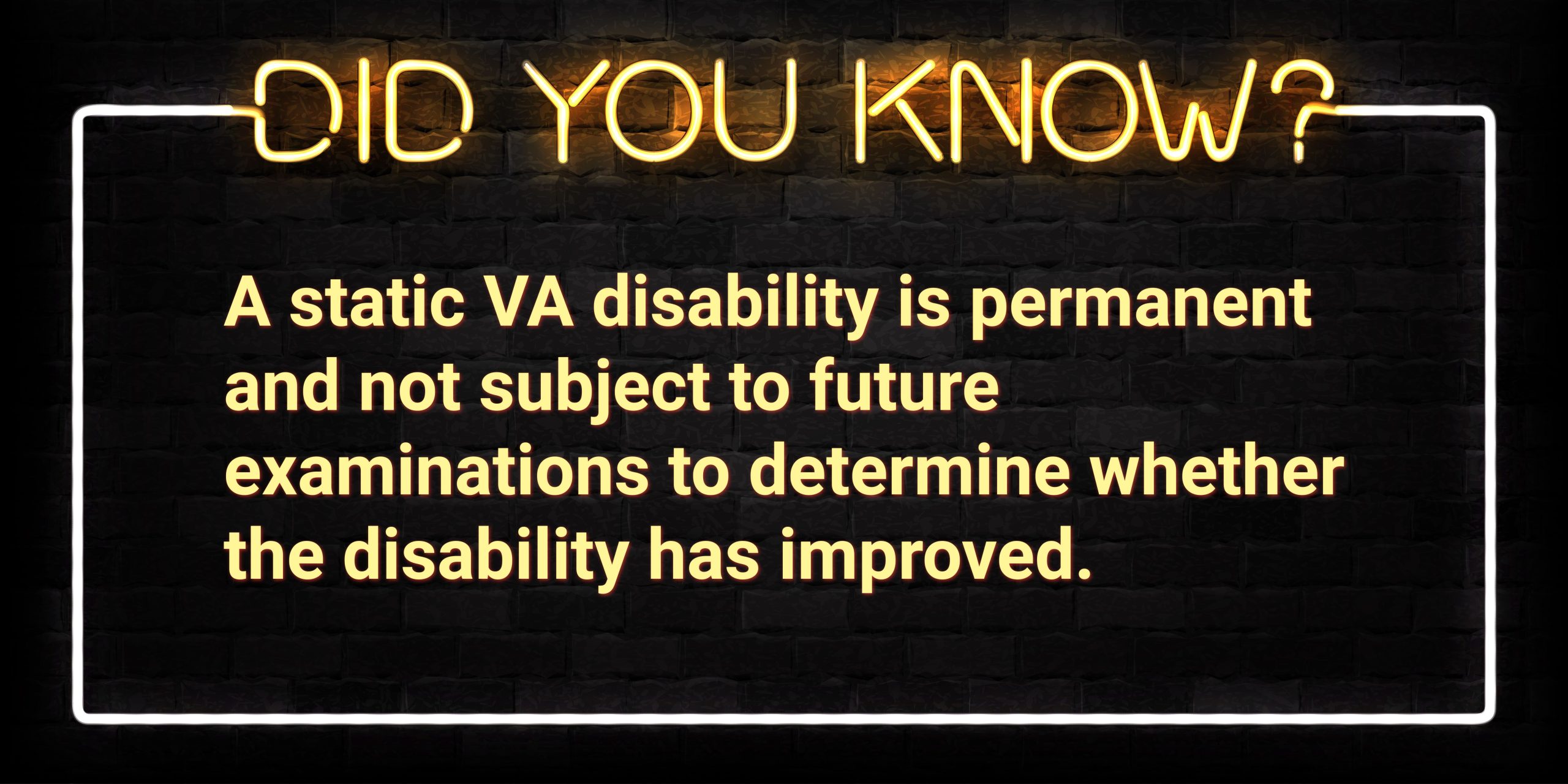Looking for Expert-Level VA Claim Answers?📱Call Us Now! 737-295-2226
Brian Reese the VA Claims Insider here, and in this post, I’ll answer the question: At what age does VA disability become permanent?
Here’s the short answer: “Age” and “permanence” of a VA disability are mutually exclusive; thus, age is not necessarily the determining factor in whether your VA disability becomes permanent.
The VA rater will determine “permanence” of a VA disability if it is reasonably certain (based upon medical evidence) that the level of impairment will continue for the rest of your life.
Translation: Whether you’re 35 or 75 years old it does not necessarily matter.
Your VA disability is unlikely to get better with time.
Okay, let’s define a few key terms around a static, permanent, total, and permanent and total disability (P&T).
Because they all mean different things!
- At What Age Does VA Disability Become Permanent?
- How Do I Know If My VA Disability Is Static?
- What is a Permanent VA Disability?
- What is a Total VA Disability?
- What is P&T VA Disability?
- How Do I Get a 100 Percent Permanent and Total VA Rating?
- Can the VA Reduce a 100% Permanent and Total VA Disability Rating?
- About the Author
At What Age Does VA Disability Become Permanent?

There is no set age of when your VA disability becomes permanent.
The VA rater will determine “permanence” of a VA disability if it is reasonably certain, based upon medical evidence, that the level of impairment will continue for the rest of your life.
Translation: Whether you’re 35 or 75 years old it does not matter.
The key is that your VA disability is unlikely to improve over time.
How Do I Know If My VA Disability Is Static?

Your VA disability may or may not be static.
A static VA disability is a disability that is considered “permanent” by its nature, history, and severity.
A static VA disability is permanent and not subject to future examinations to determine whether the disability has improved.
This means you will not be re-evaluated by the VA.
Again, this does not necessarily have to do with your age.
Want to know if your VA disability is static?
You need to get a copy of your VA rating code sheet!
What is a Permanent VA Disability?

Permanent VA disability exists when it is reasonably certain, based on medical evidence, that the level of impairment will continue for the rest of your life.
This means your VA disability will not improve with time.
It might get worse or stay the same, but it will not get better.
In this instance, your VA disability will be assigned a permanent evaluation WITHOUT the need for a routine future examination—meaning the VA will not re-evaluate the disability.
Pro Tip: It is VA policy to schedule routine future examinations only when absolutely necessary, and every effort should be made to limit cases where future examinations are requested.
What is a Total VA Disability?

Total VA disability exists when there is any impairment of mind or body which renders it impossible for the average person to follow a substantially gainful occupation.
Keep in mind that a total disability may or may not be permanent.
For example, you can have a “temporary” 100% total disability, such as a knee replacement, whereby the temporary total rating will eventually be reduced.
You can also have a “permanent” disability that is rated less than 100%, such as service connected PTSD that’s been rated at 70% for the past 12 years.
You can also be BOTH permanent and total (100% P&T).
What is P&T VA Disability?

Now let’s combine “permanent” and “total” VA disability, which is often seen as the holy grail of VA disability benefits.
According to 38 CFR § 3.340 “Total and Permanent Total Ratings (b)” Permanent and Total disability exists when:
- Your level of impairment is reasonably certain to continue throughout your life. This is the most common reason why the VA grants Permanent and Total (P&T) disability status.
- The permanent loss or loss of use of both hands, or of both feet, or of one hand and one foot, or of the sight of both eyes, or becoming permanently helpless or bedridden constitutes permanent total disability.
- Diseases and injuries of long-standing which are totally incapacitating will be regarded as permanent and total when the probability of improvement with medical treatment is unlikely.
- Permanent total disability ratings may not be granted because of any incapacity from acute infectious disease, accident, or injury, unless there is present one of the recognized combinations or permanent loss of use of extremities or sight, or the person is in the strict sense permanently helpless or bedridden, or when it is reasonably certain that a subsidence of the acute or temporary symptoms will be followed by irreducible totality of disability by way of residuals.
- Your age may be considered in determining permanence. This is the only time in VA disability benefits where the VA can take your age into consideration.
How Do I Get a 100 Percent Permanent and Total VA Rating?

Usually, the VA rater will automatically grant 100 percent permanent and total status if you meet the eligibility criteria.
However, if you’re rated at 100% scheduler, and you’re trying to upgrade to P&T status, here’s a simple 4-step process you can follow:
- Step #1: Open a new claim online at VA.gov, and add a new disability called “Request for Permanent and Total Disability Status.”
- Step #2: You’ll want to upload medical evidence showing that your disabilities meet the definitions of permanent and total (e.g., your GERD is rated at the highest level by law and isn’t going to get better).
- Step #3: It’s helpful to have your treating physician or other private medical professional write a letter on your behalf explaining how your disabilities are Total, Permanent, and unlikely to improve. Need help? Start FREE and join VA Claims Insider Elite now. You might be able to get a 100% P&T Request Letter from a private provider at discounted rates.
- Step #4: You should write a personal Statement in Support of a Claim documenting how your disability condition(s) are “static” and not subject to a Routine Future Examination (RFE).
Can the VA Reduce a 100% Permanent and Total VA Disability Rating?

Yes, the VA can reduce a 100 percent permanent and total VA disability rating.
Generally, there are four situations where the VA could reduce a 100% P&T rating:
- The initial 100% P&T rating was based on fraud.
- If you have a 100% P&T rating but open a new claim for compensation to include Special Monthly Compensation (SMC), the VA Rater can potentially see that one or more conditions has gotten better, have it re-evaluated, and subsequently reduced. This can happen if your disability conditions are not static.
- If you have a 100% P&T rating but open a new claim for a Specially Adapted Housing (SAH) or Special Housing Adaptation (SHA) grant, it will automatically trigger a C&P exam for the increase. Your disability conditions could be subject to a re-evaluation, especially if they aren’t static.
- A Clear and Unmistakable Error (CUE) for the original 100% P&T rating is found during a VA Quality Review.
About the Author

Brian Reese
Brian Reese is a world-renowned VA disability benefits expert and the #1 bestselling author of VA Claim Secrets and You Deserve It. Motivated by his own frustration with the VA claim process, Brian founded VA Claims Insider to help disabled veterans secure their VA disability compensation faster, regardless of their past struggles with the VA. Since 2013, he has positively impacted the lives of over 10 million military, veterans, and their families.
A former active-duty Air Force officer, Brian has extensive experience leading diverse teams in challenging international environments, including a combat tour in Afghanistan in 2011 supporting Operation ENDURING FREEDOM.
Brian is a Distinguished Graduate of Management from the United States Air Force Academy and earned his MBA from Oklahoma State University’s Spears School of Business, where he was a National Honor Scholar, ranking in the top 1% of his class.



